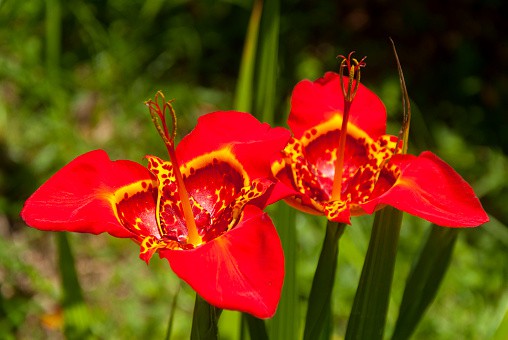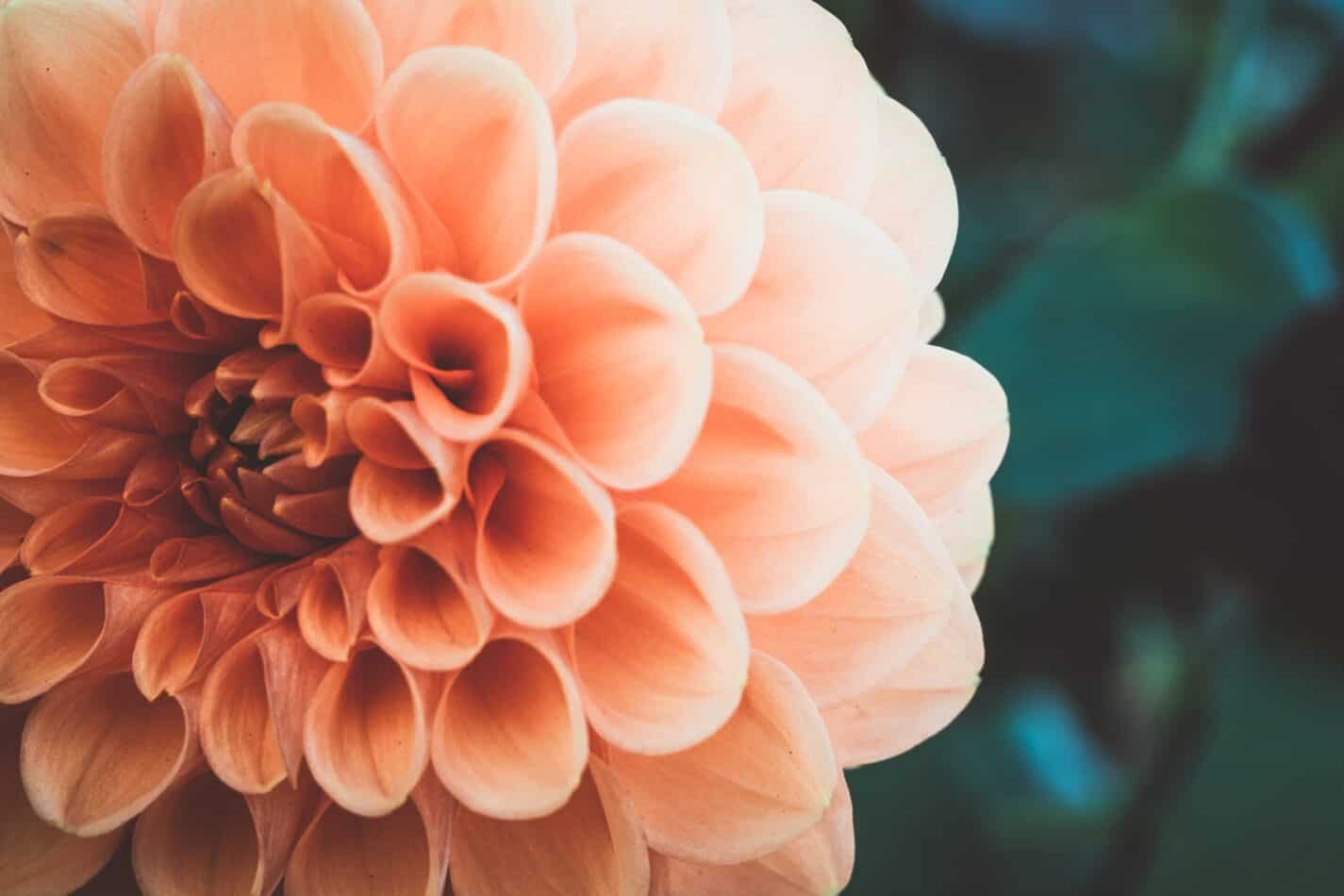Tigridia Pavonia, commonly known as the Tiger Flower or Mexican Shell Flower, is a species of flowering plant in the family Iridaceae. It is native to Mexico, Guatemala, and Belize but can also be found cultivated around the world. This easy-to-grow bloom is a popular pick for flower gardens in temperate regions and can produce stunning displays in areas with adequate sun and well-drained soil. It is part of the Tigridia genus, which includes about 15 species originally derived from Mexico.
How to Plant and Grow
Tigridia Pavonia is best grown in regions with high levels of sunlight and well-draining soil. Plant the rhizomes in early spring, pushing them into the soil just far enough so that they are barely visible from the surface. Plant in groups of at least three to ensure good pollination. The ideal soil pH for this species is slightly acidic soils. These plants appreciate plenty of water and fertilization, so water them frequently and add a balanced fertilizer periodically. As the plants begin to die back in late summer, reduce the amount of water and fertilizer feedings.
Meaning and Symbolism
Tigridia Pavonia was first recorded by explorer statesman Alexander von Humboldt in the early 19th century. It was subsequently named after the Greek goddess Tigridia, who was a goddess of light. This name became associated with the bright, eye-catching display of the flower where the petals almost seem to point the viewer towards the heavens. Because of its attractive shell-like appearance, Tigridia Pavonia is often referred to as the “Mexican Shell Flower”.
History, Mythology, and Religious Significance
The historic origin of Tigridia Pavonia is one filled with mystery. While not much is known about its true origin, the flower has been a part of Mexican culture for many centuries.
It is often associated with the Aztec deity Tlaloc, who was the god of Earth, springs, rain and fertility.
Flower Varieties and Their Defining Characteristics
Tigridia Pavonia is a genus of about 15 species of bulbous plants native to Mexico, Guatemala, and Belize. All species produce brightly-colored flowers with flared petals and a two-toned design.
Some of the most popular varieties include the Tigridia Pavonia ‘Lemonplum’, which has cream-colored petals and pink tufts of stamen, and the Tigridia Pavonia ‘Purplestripe’, which has pink and white petals with purple stripes.
How to Pot and Repot
When planting your Tiger Flower in a pot, choose a pot that is slightly larger than the rhizomes and fill it with well-draining, slightly acidic soil. Plant the rhizomes with the top of the bulb just barely visible from the surface. Plant in groups of three to ensure good pollination. Once the roots are established, repot the plants with new soil and place them in a sunny spot.
How to Prune
Tiger Flower does not require much maintenance, but the plants may need occasional pruning. Once the flowering season is over, and the leaves have died back, prune away dead foliage and weak stems to keep the plants looking tidy. Prune away the flower stalks as soon as they have withered, however leave the foliage as it helps provide important nutrients to the bulbs.
How to Propagate
Tigridia Pavonia can be propagated both through seeds and division. To propagate through division, carefully dig up the bulbs in autumn and separate them into smaller clumps, taking care to ensure that each clump has a good number of healthy, green stems. The divided bulbs can then be replanted back into the soil. To propagate through seeds, wait for the blooms to go to seed before collecting the small, round, dark-colored seeds and sowing them outdoors in autumn.
Common Pests and Diseases
While Tiger Flower is generally easy to maintain, it is not immune to pests and plant diseases. Aphids, slugs, and caterpillars can be a problem, and copper fungicides or organic pest deterrents may be necessary to keep these pests to a minimum. In addition, Tiger Flowers are prone to fungal diseases such as rust and leaf spot, which can be treated organically with natural fungicides.
Three Frequently Asked Questions About Tigridia Pavonia
Q: How often should I fertilize Tiger Flower?
A: Tiger Flowers generally require fertilization every few weeks during the growing season. A balanced water-soluble fertilizer should be applied at medium-low strength and then watered in to prevent root burn. During the winter months, you can reduce fertilizer feedings to every couple of months.
Q: What is the best way to store Tiger Flower bulbs for winter?
A: To ensure healthy flowers the following year, you will need to store the bulbs over winter. To do so, dig up the bulbs in autumn once the foliage has died back and allow them to dry for a few days before storing. Place the bulbs in a paper bag with plenty of air circulation and store them in a cool, dry location. Make sure to check on the bulbs periodically throughout the winter to make sure they are still in healthy condition.
Q: How long do Tiger Flower blooms last?
A: Tiger Flowers typically bloom in the late spring or early summer and each bloom will last up to one day. However, with so many stems blossoming on each plant, the flowering period can often last several weeks.
Fact Sheet:
| Tiger Flower | Tigridia Pavonia |
|---|---|
| Family | Iridaceae |
| Plant Type | Perennial |
| Mature Size | Up to 6 inches |
| Sun Exposure | Full sunlight |
| Soil Type | Well-draining, slightly acidic |
| Soil pH | 6.8-7.2 |
| Bloom Time | Late spring / early summer |
| Flower Color | Pink, red, yellow, orange, white |
| Hardiness Zones | 7-11 |
| Native Area | Mexico, Guatemala, Belize |
What we love from Amazon this week
Buy these wonderful flowers directly from Amazon:















